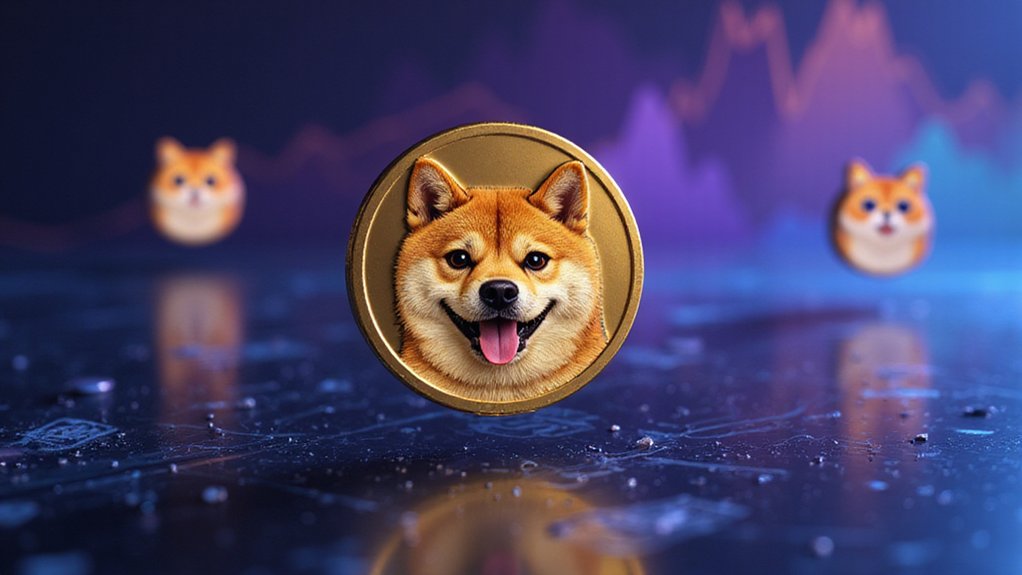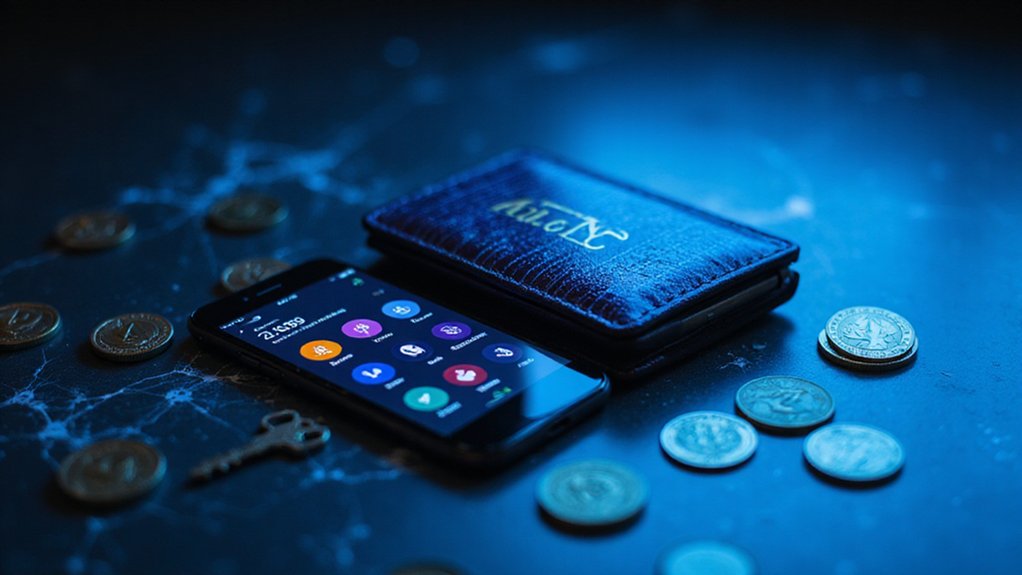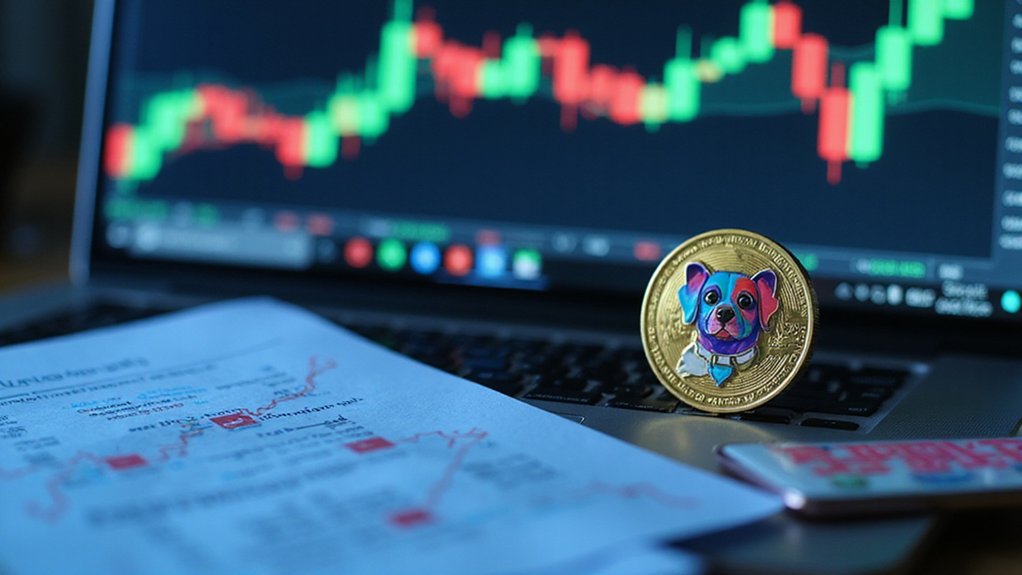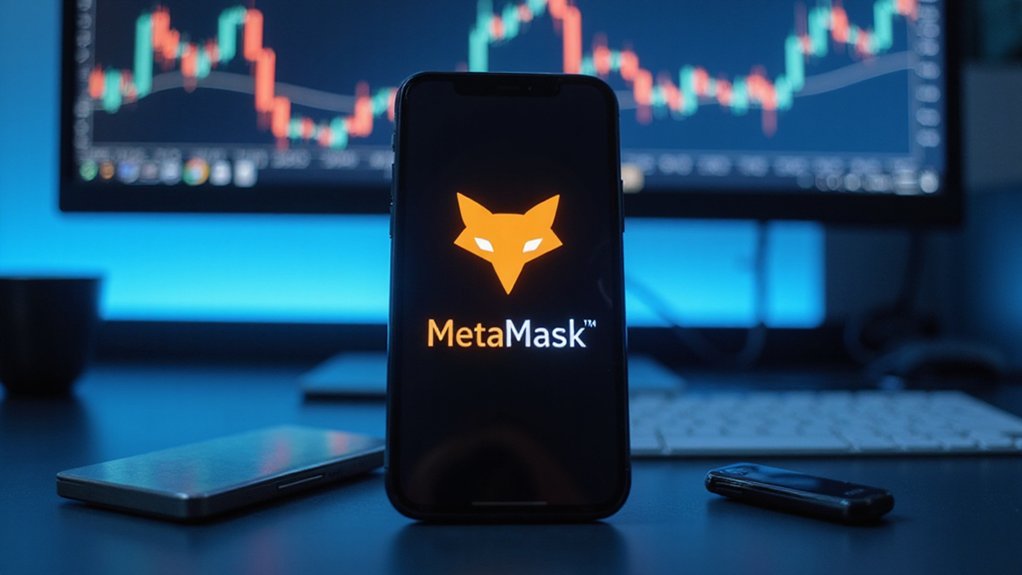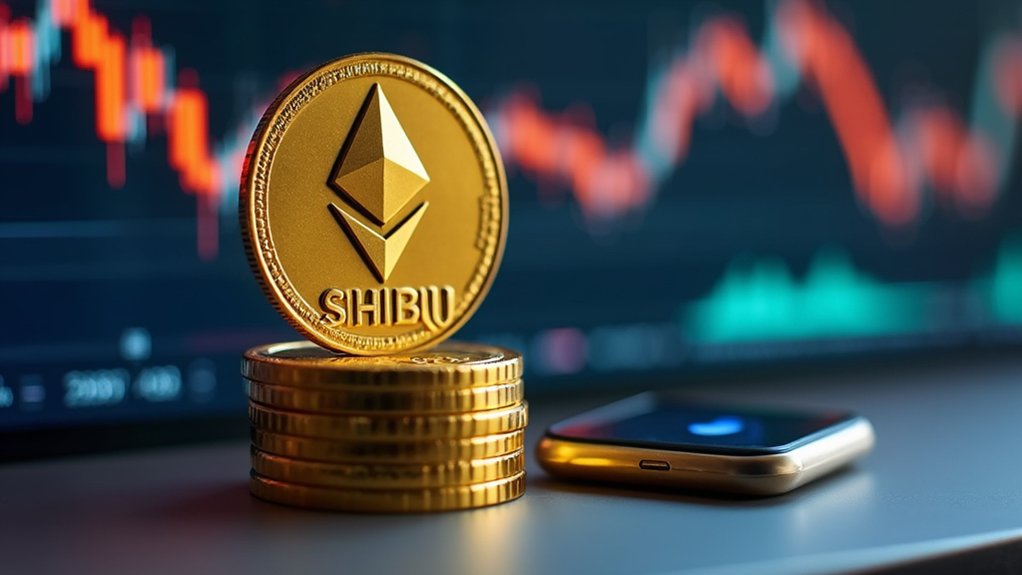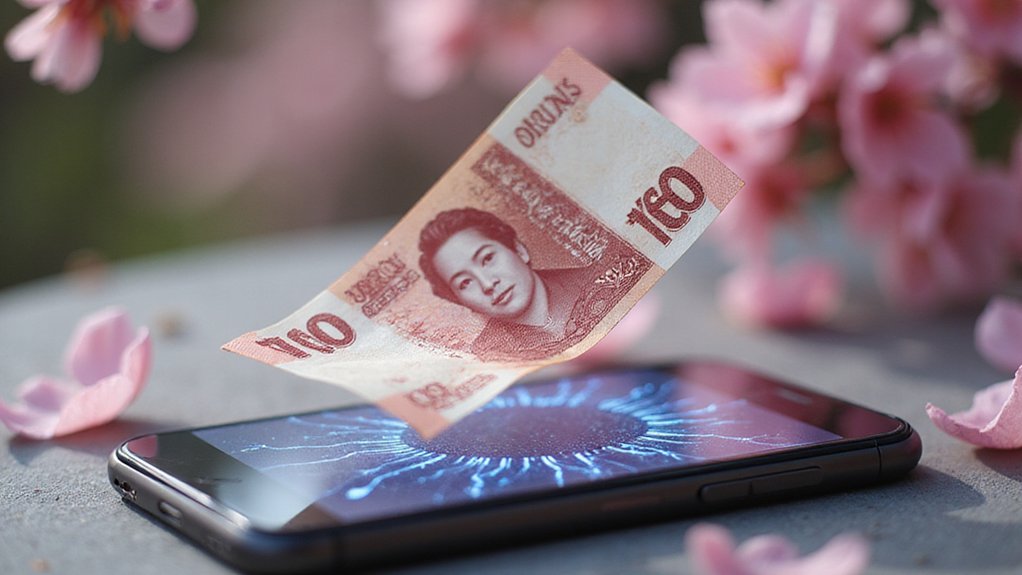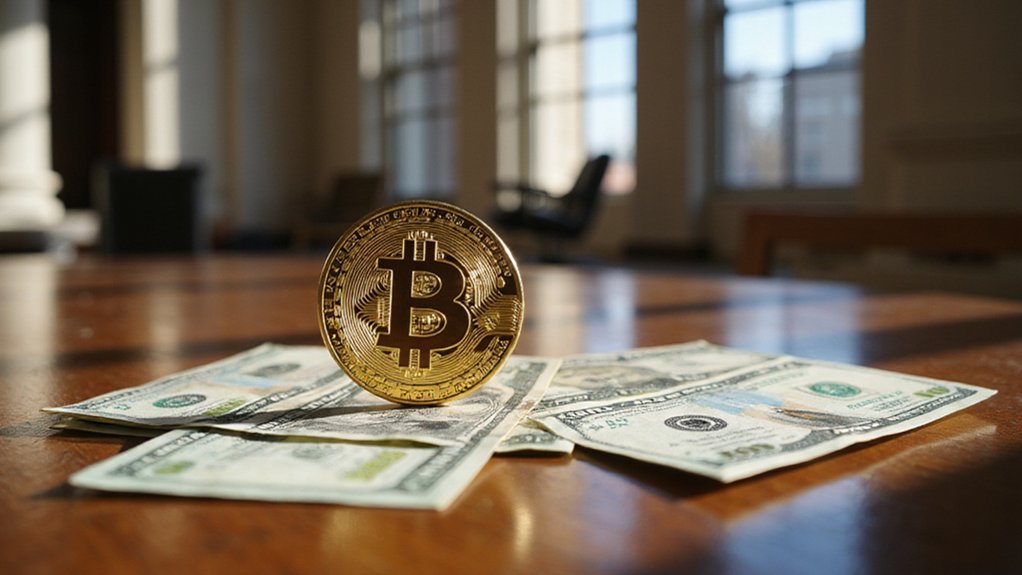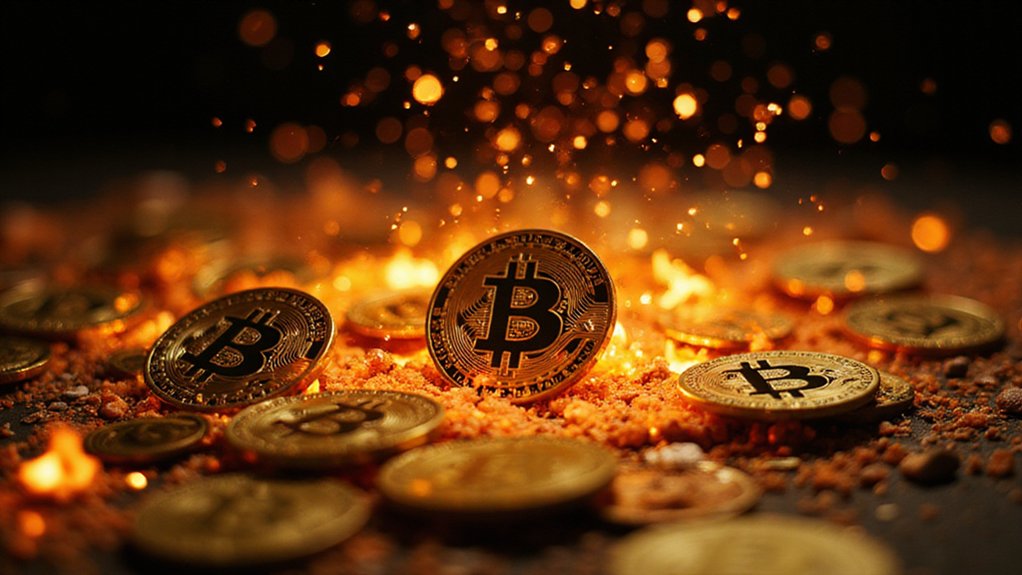Analysts spotlight several meme coins for 2025: established players Dogecoin and Shiba Inu continue demonstrating remarkable staying power, while newcomers Turbo, Trump-themed tokens, and Arctic Pablo Coin attract substantial interest. Keyboard Cat leverages millennial nostalgia with surprisingly sophisticated tokenomics, and Ski Mask Dog shows unpredictable yet compelling price action. Community-driven Banana For Scale and the cleverly named GOHOME represent the market’s creative edge. These digital assets blend speculative opportunity with cultural signification in ways traditional finance never anticipated.
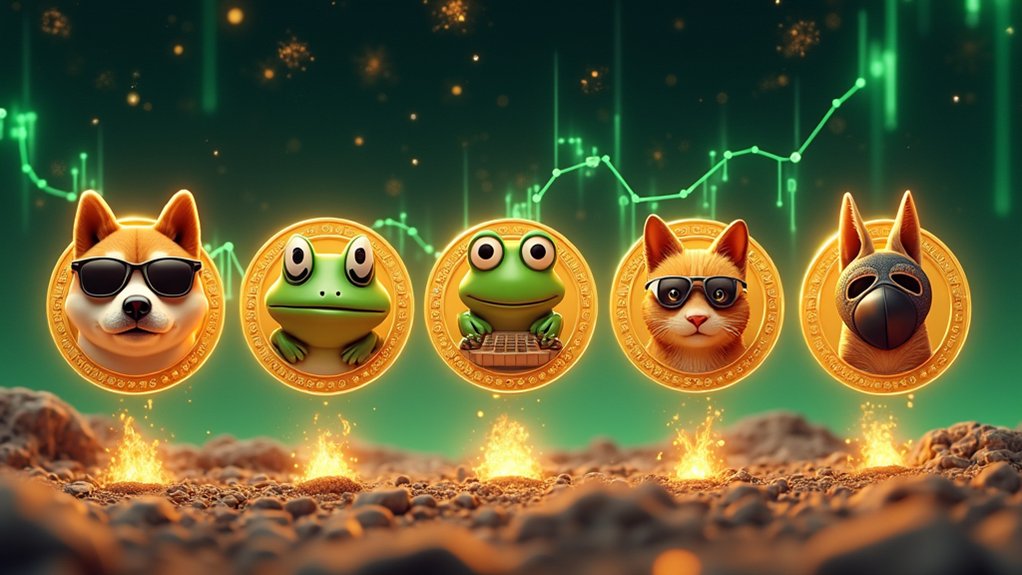
The kaleidoscopic world of cryptocurrency never ceases to amaze market observers, with meme coins—those peculiar digital assets built less on technical innovation than on cultural cachet—continuing their improbable ascent in 2025’s financial landscape. The established stalwarts maintain their positions of prominence: Dogecoin, the progenitor that transformed a Shiba Inu joke into billions in market capitalization; Shiba Inu itself, which performed the meta-feat of meme-ing a meme; and Pepe, which continues to demonstrate surprising resilience for an amphibian-based digital asset.
Meme coins continue reshaping digital finance through cultural cachet rather than technical innovation
New contenders have emerged with remarkable velocity. Turbo and Trump coins have captured substantial market attention, while Arctic Pablo Coin features prominently in analysts’ 2025 watchlists. Investors are increasingly drawn to projects offering strategic token burn mechanisms that reduce supply when Bitcoin reaches specific price milestones. Ski Mask Dog—perhaps the most fittingly named in a market characterized by unpredictability and occasional larcenous returns—has attracted significant whale activity. Meanwhile, Keyboard Cat leverages millennial nostalgia with surprisingly sophisticated tokenomics, demonstrating that even the most whimsical assets can incorporate substantive economic mechanisms.
The Reddit-originated Banana For Scale exemplifies how inside jokes can transmute into tradable assets, while GOHOME and Bitcoin Bull ($BTCBULL) illustrate the market’s endless capacity for creative nomenclature. Dogwifhat (WIF) continues its pattern of periodic surges, behaving less like a financial instrument and more like a collective mood ring for online communities. Shiba Inu has particularly evolved from its origins as a Dogecoin parody into a robust ecosystem supporting various DeFi applications through its smart contracts.
What drives this peculiar market segment? The convergence of social identity, community participation, and speculative opportunity creates a unique value proposition that transcends traditional investment paradigms. These assets function simultaneously as financial instruments, membership tokens, and cultural signifiers—a tripartite identity that conventional analysis struggles to accommodate.
For investors willing to navigate this high-volatility terrain, meme coins represent not merely speculation but participation in emergent forms of social collaboration and value creation. While traditional finance might view these assets with skepticism (not without justification), they nonetheless reflect a profound shift in how online communities conceptualize and instantiate value. Whether this represents financial democratization or collective delusion remains an open question worthy of consideration.
Frequently Asked Questions
What’s the Difference Between Meme Coins and Traditional Cryptocurrencies?
Meme coins and traditional cryptocurrencies diverge fundamentally in their DNA.
Where traditional cryptocurrencies champion technical innovation, utility-driven value, controlled tokenomics, and institutional appeal, meme coins—those peculiar financial phenomena—derive their existence from social momentum and cultural zeitgeist rather than intrinsic utility.
Their hyperinflationary supplies and speculative volatility create a high-risk profile that attracts retail thrill-seekers rather than the institutional investors who gravitate toward projects with substantive development roadmaps and regulatory compliance.
How Volatile Are Meme Coins Compared to Bitcoin?
Meme coins exhibit considerably higher volatility than Bitcoin, with price swings that can reach astronomical proportions virtually overnight.
While Bitcoin fluctuates within relatively predictable parameters (though still volatile by traditional market standards), meme coins can surge or plummet by triple-digit percentages based merely on a celebrity tweet or Reddit frenzy.
Bitcoin’s established market presence and substantial liquidity buffer against the dramatic volatility that characterizes the meme coin landscape, where fortunes materialize—and evaporate—with startling rapidity.
Can Meme Coins Actually Be Good Long-Term Investments?
Most meme coins lack fundamentals for long-term sustainability, making them poor vehicles for traditional investing.
While select projects implementing deflationary tokenomics, staking rewards, or genuine utility (as seen with Peanut the Squirrel) could theoretically maintain value, their extreme volatility and vulnerability to abandonment risk renders them speculative at best.
The occasional unicorn may emerge (early Dogecoin investors certainly aren’t complaining), but treating meme coins as investments rather than speculation remains financial Russian roulette.
Are Meme Coins Regulated Differently Than Mainstream Cryptocurrencies?
Meme coins inhabit a peculiar regulatory limbo compared to their mainstream crypto counterparts.
Following recent reclassification as “collectibles” rather than securities, they largely escape SEC oversight—a distinction that would surprise few observers of their fundamentally speculative nature.
While Bitcoin and Ethereum face commodity or security classifications with attendant scrutiny, meme coins benefit from regulatory gaps that simultaneously reduce compliance burdens and strip away investor protections.
The CFTC may eventually fill this oversight vacuum, though regulatory clarity remains elusive.
What Factors Typically Cause a Meme Coin to Surge?
Meme coin surges typically result from a perfect storm of viral social media attention (particularly from crypto-influencers or celebrities), community momentum, and speculative FOMO.
These digital assets—often devoid of fundamental value—can experience meteoric price action when endorsed by figures like Elon Musk or when community engagement reaches critical mass.
Market liquidity constraints amplify these movements, as relatively modest capital inflows can trigger disproportionate price appreciation in these thinly-traded tokens—a phenomenon as predictable as it is irrational.
